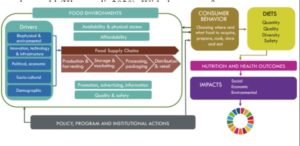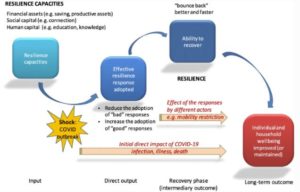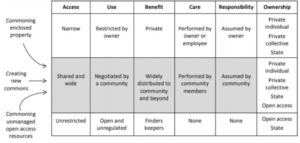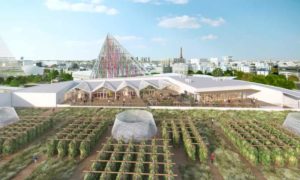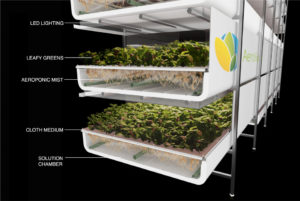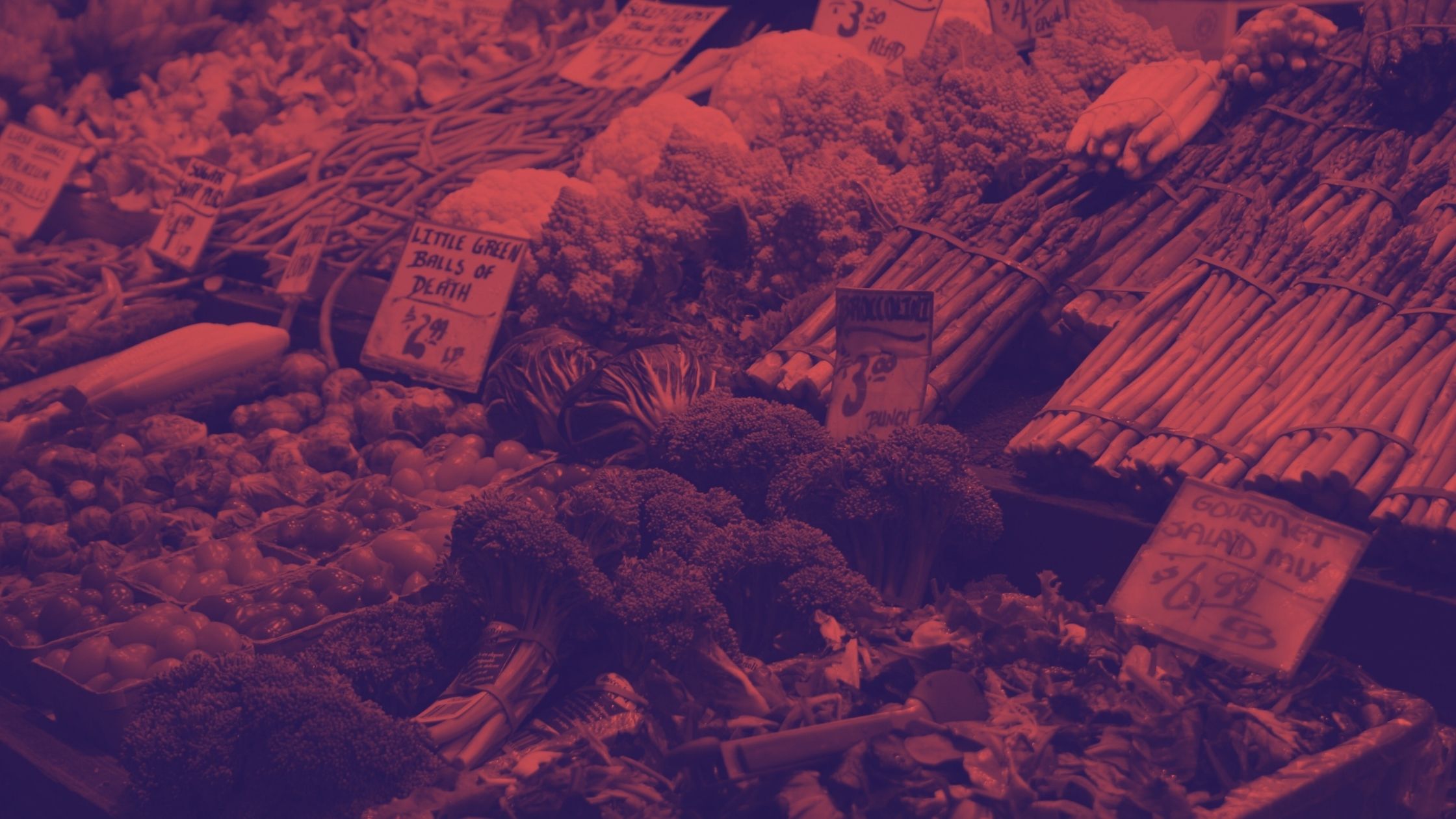
Written by James Balzer
Introduction
COVID-19 has created a plethora of flow-on adversities beyond the realm of health. It particularly hinders the progress of the UN Sustainable Development Goals (SDGs) (UNDESA, 2020). This is highlighted in Figure 1, displaying the importance of systems thinking in a crisis, as no issue exists in a vacuum, but always exists in complex and interconnected contexts.
 Figure 1: The multifaceted flow-on effects the COVID-19 pandemic has instigated onto the SDGs UNDESA (2020)
Figure 1: The multifaceted flow-on effects the COVID-19 pandemic has instigated onto the SDGs UNDESA (2020)
One of the most adverse effects of the pandemic has been the instigation of food insecurity. In addition to production and distribution inadequacies, the socio-economic perturbations driven by the pandemic have seen a rapid rise of poverty in the developed world – often in the form of ‘new poverty’ (Healy et. al, 2020). This is notably apparent in urban areas, where various economic industries have been undermined by COVID-19 response policies (Bene, 2020).
This is a salient matter in Europe, especially as wage loss and inequality has been accentuated by social distancing and lockdown measures (Akter, 2020; Palomino et. al, 2020). Equitable access to food has thus been hindered by a worsening of socio-economic conditions, placing strain on governments and NGOs to provide food to many unemployed individuals and families experiencing ‘new poverty’ (Brelie, 2020). This occurrence underscores the vulnerability of neoliberal food systems, and the barometer they provide for social vulnerabilities inherent in neoliberal urban planning paradigms (Trauger & Passidomo, 2012; Davidson & Gleeson, 2013).
This article will glean methods for stronger urban food security through a rescaling of urban political economy (see Gibson-Graham, 2016; Gibson-Graham, 2006; Trauger & Passidomo, 2012; Davidson & Gleeson, 2013). It aims to do so through the epistemology of feminist and Marxist geographies, implicating the need for equity in decision-making and localised ‘ethics of care’ in the ownership of food systems (see Williams, 2020; Gibson-Graham, 2006). Such epistemologies underpin concepts of “just sustainabilities” and post-capitalist ideologies, and counteract corporatised, productivist and neoliberal frameworks of food disconnecting agricultural geographies from localities and co-ownership (Agyeman, 2013 p.2; Trauger & Passidomo, 2012; Healy et. al, 2020).
Neoliberal Food Systems, Urban Resilience and COVID-19
Contemporary discourse increasingly scrutinises the attributes of neoliberal food systems – propounding their suboptimal resilience, environmental sustainability and socio-economic equity. COVID-19 has accentuated such discourse, as supply chains and access to food were marred by various inadequacies in the wake of the crisis (Clapp & Moseley, 2020; Healy et. al, 2020; Trauger & Passidomo, 2012). Resultantly, this year, an additional 130 million individuals will face acute hunger across the world (Khorsandi, 2020). With the onset of an increasingly precarious world, existent upon multiple chronic crises, resilience must forthrightly guide food security policy and paradigms (United Nations, 2020; Bohland et. al, 2018; ).
The food insecurity occurring from COVID-19 is not solely caused by sudden price hikes or falling commodity prices. Rather, the pandemic disrupted food systems “via several interlocking dynamics with many moving parts that are often hard to disentangle” (Clapp & Moseley, 2020 p.1401) (also see United Nations, 2020). Figure 2 & 3 demonstrate the complexity and interdependency of these systems.
Figure 2: The multifaceted nature of food systems United Nations (2020)
Accordingly, Clapp & Moseley (2020) propagate the following factors as drivers of COVID-induced food insecurity:
- The undermining of food movement through supply chains due to lockdowns and illnesses amongst food system employees
- The global recession, resulting in enormous job losses, leading to an affordability and equity of access crisis
- Various factors, including the aforementioned, have led to uneven food price dynamics at local and global scales (also see Akter, 2020).
Figure 3: The complex systems of food insecurity induced by the COVID-19 pandemic Clapp & Moseley (2020)
Much of this is a product of the promiscuous food system that is “deeply interconnected and ‘efficient’ in economic terms, yet also vulnerable to disruption” (Clapp & Moseley, 2020 p.1397). Today, at least 80% of the global population is fed, at least partially, via food imports, and the expenditure on these imports in 2019 was triple the amount spent in 2000 (The Economist 2020, cited in Clapp & Moseley, 2020 p.1398). Additionally, around 20% of dietary energy supply is provided by imported food (FAO et. al, 2020 p.132, cited in Clapp & Moseley, 2020 p.1398). This reality underscores the pertinence of neoliberal food systems, and their vulnerability.
Neoliberal systems engender efficiency and short-termism, often operating in a parochial and fragile manner. Resultantly, such a system lacks resilience to various shocks and stresses, deriving from its “political short-termism endemic within risk-driven forms of ‘neoliberalising’ governance typical of global capitalism” (Rogers et. al, 2020, p.3) (also see Healy et. al, 2020). This tension makes long-term management of such risks, hazards and threats difficult, due to its existence “within a system driven by economic growth and risk-averse, efficiency-oriented practices” (Rogers et. al, 2020 p. 4). Such thinking is often coined ‘just-in-time’ models of production and distribution, ignoring the need for redundancy planning and proper ‘slack’ in the pursuit of efficiency (Bohland et. al, 2018; Rogers et. al, 2020).
European urban environments are facing this phenomenon. The recent ban on freight entering France from the UK is a stark example of this, with retailers predicted to run out of food in a matter of days as a result of sudden, unpredictable changes to border restrictions between the UK and France. This is in conjunction with the flow-on effects from such, including economic damages to transport and supermarket workers and the food waste created through the delays.
Conjunctionally, a record amount of European citizens are entering ‘new poverty’, leading to food unaffordability. This is driving a broader, chronic crisis of food insecurity and injustice (Brelie, 2020). In Barcelona, nearly half of those asking for social or financial support are classified as the ‘new poor’. COVID-19 could raise the Spanish poverty rate to 1.1 million (Oxfam, 2020). Furthermore, the Barcelona food bank NGO, ‘From Neighbour to Neighbour’, have gone from delivering 2.5 tonnes of food per month, to over 100 tonnes per month (Brelie, 2020). In Vienna, the food bank NGO Volkshilfe Wien, cites a 70% increase people asking for emergency food (Brelie, 2020). This is in accordance with rapid changes in European food prices, exacerbating the socio-economic adversities underpinning COVID-induced food injustice (Akter, 2020).
This necessitates a strong appreciation of proactive and reactive resilience measures in food systems, particularly through the framework of ‘just resilience’ (see Bohland et. al, 2018).
Figure 4: A basic resilience framework for crisis-induced food insecurity Bene (2020)
An example of a basic resilience pathway can be seen in Figure 4. As Bene (2020) outlines, contingency and redundancy pathways must be properly considered in developing equitably resilient food systems.
These considerations beckon a renewed consideration of urban political economy and resilience. This is especially through the lens of equitable and just access (Bohland et. al, 2018; Alibasic, 2018).
Rescaling Political Economy: A Solution Framework?
Localised ownership and co-production of food is a propagated means of counteracting the ontological dualism between producer and consumer in the contemporary agricultural system (Trauger & Passidomo, 2012). This often involves instilling a ‘Commons Sociality’, which rescales political economy to a localised level, promoting democratisation and equity in food systems (see Gibson-Graham et. al, 2013). This is demonstrated in Figure 5, and often exists in the form of ‘community economies’ (see Healy et. al 2020; Dupuis & Goodman, 2005).
Figure 5: The ‘Identi-Kit’ of scale, ownership and power in food systems Gibson-Graham (2013)
Accordingly, post-capitalist understandings of food are promoted as a key element to food system reformation in the post-COVID world (Healy et. al, 2020). This implies a stronger sense of community co-production and co-ownership, attenuating the neoliberal and corporatised zeitgeist of food systems – possessing elongated supply chains and decision making separated from localities of place (Gibson-Graham, 2006; Healy et. al, 2020; Dupuis & Goodman, 2005). Resultantly, “the values of a neoliberalising market-driven form of governance may be contested by localised forces for democratisation of governance, at once and within the same project” (Rogers et. al, 2020 p.3) (also see Mulligan & Rogers, 2017).
A key European example manifesting such thinking in reality is the world’s largest rooftop farm in Paris (see Harrap, 2019) (see Figure 6). This rooftop farm will be 14’000 square metres in size and will grow more than 30 plant species, producing approximately 1000 kilograms of produce every day in high season. Acting as a community economy, the produce will be used to feed residents in the South-West of Paris, through both “veg-box” schemes or through shops, hotels or canteens. This will encourage more localised food production, which can build community cohesion and respect. Furthermore, community building can be achieved through the garden’s educational tours, team-building workshops and special community events. Local residents will also be able to have their own plot of vegetables, allowing urban residents to participate in agricultural processes normally only reserved for those in rural areas (Harrap, 2019). This relates to the concept of “commons”, which allows consumers to become producers, instigating “food-citizen engagement in a particular place through the creation of a mutually dependent stake in the outcomes of agriculture” and “the development of a democratic, socially and economically just, and environmentally sustainable food system” (Trauger & Passidomo 2012, p.297; Wilkins, 2004 p.269, cited in Trauger & Pasidom 2012, p.285).This is a strong example of ‘rescaled’ urban political economy in its democratised provision of food justice and co-ownership (Trauger & Passidomo, 2012; Dupuis & Goodman, 2005; Davidson & Gleeson, 2013).
Figure 6: An artist’s impression of the urban farm in South-West Paris Harrap (2019)
Another example of this is the Herttoniemi Urban Food Co-operative in Finland (see European Commission, 2012). This co-operative involves renting land upon which a farmer is employed to grow food. Members have tiered payment options, whereby a threshold is present to attain a certain share of the food grown. This employs principles of collectivism and an ‘ethics of care’ propagated by Marxist and feminist geographies, promoting the equitable collective rights of ‘rescaled’ community economies in a post-capitalist counteraction to traditional neoliberal models of design (Williams, 2020; Trauger & Passidomo, 2012). Finland has experienced notable food security issues since the pandemic began, leading to the widespread promotion of “the localisation and citizen engagement in food production…[reinstating] food as a common responsibility and entitlement, beyond the current forms of exasperated commodification” (Healy et. al, 2020 p.6) (also see Gibson-Graham, 2016; Mulligan & Rogers, 2018). Additionally, this movement has been “shedding light on the often overlooked social structures that sustain communities through hardship”, often mediated through commons and community economies (Healy et. al, 2020 p.6).
In the United States, a socio-technical demonstration of this is the ‘Aerofarms’ vertical farm in New Jersey (see Aerofarms, 2017; Reilly, 2017). This is a large warehouse of aeroponic vegetables stacked upon each other, creating two million pounds of vegetables per year (Aerofarms, 2017) (see Figure 7). Furthermore, their farming technology is much more environmentally sustainable (see Figure 8). It uses 95% less water than traditional farming methods, and yields up to 390 times more crops per square foot (Myers, 2019). Aerofarms achieves this through the use of aeroponic technology, providing the right amount of water and nutrients with precisely monitored temperature and humidity, tracked by data sensors and IoT technology (Aerofarms, 2017).
Figure 7: A 3D model of Aerofarms’ aeroponic set-up Aerofarms (2017)
Additionally, Aerofarms has received $11.4 million worth of tax incentives over the next decade for the Camden farm, through the ‘Grow New Jersey Assistance Program Grants’ (Reilly, 2017). These tax incentives support businesses that offer employment and economic prospects for economically stressed areas, such as Camden (Reilly, 2017). This is as the farm in Camden aims to increase employment in the local precinct, with 75% of their employees coming from Camden or South New Jersey. Likewise, the Camden farm pays 40% above minimum wage and offers full employment benefits (Reilly, 2017). The vertical farm will also include a system of grocery stores, organic food markets and eateries, and local distribution and transportation networks. These will offer opportunities for a variety of other food-service related positions, as well as bolstering community cohesion (Reilly, 2017). In impoverished urban communities, such as Camden, this offers an opportunity for urban renewal and cohesion, therefore demonstrating agricultural prosperity, but in a more local, rather than ‘glocal’ sense (Dupuis & Goodman, 2005). Aerofarms also display the possibility of global socio-technical transitions, driven through technological multi-scalar transformations, particularly ‘bottom-up ones’. This utilities technology to contrast ‘top-down’ corporatised agriculture currently pertinent in global food systems (Bridge, 2018; Fuenschilling & Binz, 2018).
Figure 8: The comparative environmental benefits of Aerofarms’ vertical farming technology Wells (2020)
This is notably through its creation of a “community economy”, as stipulated in Gibson-Graham (2006, p.166). This is as a community economy “is an acknowledged space of social interdependency and self-formation”, which depends on the “filling up by collective actions in place”, which is in opposition to the “more familiar project of economic development” prevalent in capitalocentric discourses and paradigms (Gibson-Graham 2006, p.168). This therefore proves Aerofarms’ model is disrupting traditional economic hierarchies and systems, in a way, therefore, acting as a post-capitalist entity. This acts as a co-benefit alongside the positive environmental outcomes created through its operations. In doing so, this highlights the role of socio-technical innovations, particularly in the Fourth Industrial Revolution, in being key actors addressing contemporary and future concerns of agriculture and environmental sustainability more broadly.
Conclusion
The year 2020 acts as a dress rehearsal for what is to come. The precariousness of our global systems and paradigms is now forthrightly displaying itself, implicating the need for proactive and reactive measures of equity and resilience (Bohland et. al, 2018). The pandemic, climate change, riots in the United States, a global recession, the changing world order, the resurgence of extreme poverty and chronic inequalities all beckon a renewed worldview for peace and prosperity (Bank of America Merill Lynch, 2019).
The food security adversities driven by the pandemic are broad and deep in nature. The temporal and disparate harms across all sectors of society are yet to be fully understood, yet already, they are obvious and concerning. Individuals with less wealth and income suffer the most, and will likely continue to in the recovery phase. This creates concern for the onset of a ‘K-Shaped’ recovery, whereby inequality is exacerbated in the emergence from the pandemic, as was seen in the recovery from the GFC (see Mazzucato, 2020). Hence, this problem of food insecurity, and other socio-economic deficiencies made apparent by the pandemic, are not simply acute, but are chronic, and necessitate a holistic system change to mediate equitable resilience outcomes (see Bohland et. al, 2018). Rescaling political economy, and questioning the characteristics of globalisation and neoliberal philosophies is a plausible avenue of addressing such. It is unclear how this might be implemented on scale, but this article provides some insights where it is already happening as a means of attenuating food insecurity.
Reference
Aerofarms (2017). We are transforming agriculture. http://aerofarms.com
Agyeman, J. (2013). Introducing Just Sustainabilities: Policy, Planning, and Practice, Zed Books.
Akter, S. (2020). ‘The impact of COVID-19 related ‘stay-at-home’ restrictions on food prices in Europe: findings from a preliminary analysis’. Food Security. 12:719–725, https://doi.org/10.1007/s12571-020-01082-3
Bank of America Merrill Lynch (2019). Transforming the World: The 2020s. https://resiliencesystem.org/sites/default/files/Decade_of_Peaks.pdf
Béné, C. (2020). ‘Resilience of local food systems and links to food security – A review of some important concepts in the context of COVID-19 and other shocks’. Food Security. 12: 805–822, https://doi.org/10.1007/s12571-020-01076-1
Bohland, J., Davoudi, S., Lawrence, J. (2018). The Resilience Machine, Routledge.
Brelie, H. (2020). COVID-19 has created a new poverty class in Europe. 14 December. https://www.euronews.com/2020/12/11/new-poverty-hits-europe
Bridge, G. (2018). Energy and society: a critical perspective, Routledge.
Clapp, J and Moseley, W. (2020). This food crisis is different: COVID-19 and the fragility of the neoliberal food security order, The Journal of Peasant Studies, 47:7, 1393-1417, DOI:10.1080/03066150.2020.1823838
Davidson, K., and Gleeson, B. (2013). ‘The Urban Revolution that Isn’t: The Political Ecology of the New ‘Urbanology’. Journal of Australian Political Economy. 72: 52–79.
DuPuis, E, Goodman, D 2005, ‘Should we go ‘home’ to eat?: toward a reflexive politics of localism’, Journal of Rural Studies, 21 (3): 359-371. https://doiorg.simsrad.net.ocs.mq.edu.au/10.1016/j.jrurstud.2005.05.011
European Commission (2020). Herttoniemi Urban Food Co-operative. accessed 26 December 2020. https://www.pathways-project.eu/herttoniemi-urban-food-co-operative
Fuenfschilling, L. and Binz, C. (2018). ‘Global socio-technical regimes’. Research Policy. 47 (4): 735-749. https://doi-org.simsrad.net.ocs.mq.edu.au/10.1016/j.respol.2018.02.003
Gibson-Graham, J. (2006). Building community economies in a post-capitalist politics, University of Minnesota Press.
Gibson-Graham, J., Cameron, J. and Healy, S. (2016). Commoning as a Postcapitalist Politics. In Releasing the Commons: Rethinking the futures of the commons, Routledge.
Gibson-Graham, J., Cameron, J. and Healy, S. (2013). Take back the economy: An ethical guide for transforming our communities. University of Minnesota Press.
Harrap, C. (2019), World’s Largest Urban Farm To Open, On a Paris Rooftop, 13 August. <https://www.theguardian.com/cities/2019/aug/13/worlds-largest-urban-farm-to-open-on-aparis-rooftop>.
Healy, S., Chitranshi, B., Diprose, G., Eskelinen, T., Madden, A., Santala, I., and Williams, M. (2020). Planetary Food Commons and Postcapitalist Post-COVID Food Futures, Development, https://doi.org/10.1057/s41301-020-00267-9
Khorsandi, P. (2020). “WFP Chief Warns of ‘Hunger Pandemic’ as Global Food Crises Report Launched”. World Food Programme Insight, April 22.
Mazzucato, M (2020, October 2). Capitalism After The Pandemic: Getting the Recovery Right, Foreign Affairs Magazine, <https://www.foreignaffairs.com/articles/united-states/2020-10-02/capitalism-after-covid-19 pandemic?utm_medium=social&utm_source=instagram_posts&utm_campaign=ig_soc&utm_content=later-10652654>.
Mulligan, M & Rogers, P. (2018) ‘Looking at emergent and multi-scale governance through the lens of community formation’. Resilience. 6 (3): 145-162, https://doi.org/10.1080/21693293.2017.1306157
Myers, J. (2019). “This company grows crops inside, stacked on top of one another”, World Economic Forum, 4 September.
Oxfam (2020). ‘Poverty in Spain could increase by more than 1.1 million people because of the impact of the pandemic’. 14 October. https://www.oxfamintermon.org/es/nota-de-prensa/pobreza-en-espana-podria-aumentar-mas-de-1-millon-por-pandemia
Palomino, J., Rodriguez, J., and Sebastian, R. (2020). Wage inequality and poverty effects of lockdown and social distancing in Europe, European Economic Review, 129, https://doi.org/10.1016/j.euroecorev.2020.103564
Reilly, D. (2017). “World’s Largest Indoor Farm to Rise in An Unlikely Spot in South Jersey”, The Philadelphia Inquirer, 13 May.
Rogers, P., Bohland, J. and Lawrence, J. (2020). Resilience and Values: Global perspectives on the values and worldviews underpinning the resilience concept. Political Geography, 83: https://doi-org.simsrad.net.ocs.mq.edu.au/10.1016/j.polgeo.2020.102280
Trauger, A. and Passidomo, C. (2012) ‘Towards a post-capitalist-politics of food: cultivating subjects of community economies’ ACME: An International E-Journal for Critical Geographies, 11(2): 282-303.
UNDESA (2020). Shared Responsibility, Global Solidarity: Responding to the Socio-economic Impacts of COVID-19, https://www.un.org/sites/un2.un.org/files/sg_report_socio-economic_impact_of_covid19.pdf
United Nations (2020). Policy Brief: The Impact of COVID-19 on Food Security and Nutrition. https://www.un.org/sites/un2.un.org/files/sg_policy_brief_on_covid_impact_on_food_security.pdf
Wells, D. (2020, February 26). Are controlled environments the future of food production? Sustainability in Action. http://sustain.auburn.edu/are-
Williams, M. (2020). The possibility of care-full cities, Cities, 98, https://doi-org.simsrad.net.ocs.mq.edu.au/10.1016/j.cities.2019.102591

 The ’Ndrangheta’s Infiltration and Threat to European Institutions
The ’Ndrangheta’s Infiltration and Threat to European Institutions  From Paper to Practice: How Grassroots Norms Undermine Gender Rights in Pakistan
From Paper to Practice: How Grassroots Norms Undermine Gender Rights in Pakistan  Exploited Childhoods: The Role of Global Corporations in Perpetuating and Mitigating Child Labour
Exploited Childhoods: The Role of Global Corporations in Perpetuating and Mitigating Child Labour  Human Rights Challenges in Addressing SLAPPs in Media, NGOs and Journalism in the EU
Human Rights Challenges in Addressing SLAPPs in Media, NGOs and Journalism in the EU 